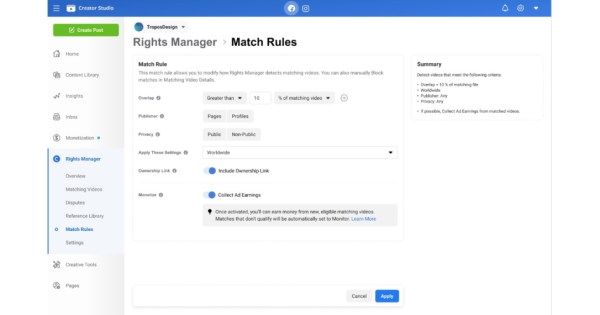Cryptocurrency mining has been slowly but surely becoming less and less popular even as crypto itself has been gaining popularity and mainstream attention. After all, getting crypto or investing in cryptocurrencies is a lot easier these days than it was 5 or 10 years ago – so mining, including mobile mining, which is considerably more complex than simply buying a coin on an exchange or even staking tokens within your wallet, has naturally lost its flair. However, there are projects that aim to challenge the issues crypto mining faces — and the most prominent one is the Pi Network.
Pi Network is a crypto project that I, Daria Morgen, the author of this article, have been interested in for a long time. Its accessibility aligns perfectly with the ideals of the crypto market, like decentralization. I’m really excited to tell you more about it — let’s dive in!
What Is Pi Network?
Launched in 2019 by Stanford PhDs Dr. Nicolas Kokkalis and Dr. Chengdiao Fan, Pi Network is an innovative project designed to lower the barriers to crypto ownership. Pi Network’s main product, Pi cryptocurrency, aims to be far more accessible than traditional cryptocurrencies. Pi Network’s unique approach is a mobile blockchain mining project, meaning the “mining” process can be conducted on your mobile device, with minimal impact on device performance. The maximum supply of PI is currently set at 100 billion, with 25% of all coins being allocated to the Pi core team.
It’s important to note that Pi’s mainnet is currently enclosed, meaning its crypto coins can’t be transferred out of the network or traded on crypto exchanges yet. There are no PI coins in circulation at the moment. For this same reason, there is no actual Pi coin price, and any Pi price prediction will be purely predictive.
Beware of scammers that might offer you to buy or sell your PI.
Cryptocurrency Mining Explained
To understand Pi Network, we first need to explore the world of crypto mining. In traditional cryptocurrencies like Bitcoin, mining is a process where transactions are verified and added to the blockchain, or public ledger. This is also where network security plays a crucial role, as miners help validate transactions and safeguard the integrity of the blockchain, making it resilient against attacks. Without mining, one wouldn’t be able to purchase BTC or exchange it on platforms like Binance or Changelly.
Mining also introduces new coins into circulation, with miners rewarded for their work with a certain number of tokens. However, crypto mining usually requires substantial computational resources and energy consumption, factors that have raised environmental concerns and increased the entry barrier for average users.
A typical mining rig can cost anywhere from $500 to several thousand dollars and needs frequent upkeep care — and that’s without mentioning the electricity costs. There are ways to mine crypto without having to shoulder the costs of mining equipment directly: you can get an account with a cloud mining service. However, even this option can be quite complicated and not as profitable as other crypto investment alternatives.
How Pi Network Mining Works
The mining process in the Pi Network doesn’t rely on the computational power of your device. Instead, it uses the consensus algorithm SCP (Stellar Consensus Protocol), which allows it to be mined on a smartphone without draining your battery or data.
To start mining PI, users must download the Pi Network app and sign up using an invitation code, usually received from the person who referred them. The Pi mining app doesn’t need to stay open for the mining to occur. Users must check in every 24 hours and hit the lightning button to boost their mining rate. The mining rate is also boosted by referring other users with your referral code, reflecting Pi Network’s emphasis on expanding its user base.
It is worth noting that one person can only have one Pi account.
Become the smartest crypto enthusiast in the room
Get the top 50 crypto definitions you need to know in the industry for free
Pi Network News
Pi Network has been making headlines recently with its KYC (Know Your Customer) developments and its push for strategic business partnerships ahead of its long-awaited Open Network launch. The platform has extended its KYC deadline to November 30, 2024, giving users more time to verify their identities and prepare for the mainnet migration. Initially, the deadline was set for September 30, but this extension aims to encourage more widespread participation in the network. The final date for migrating to the mainnet remains December 31, 2024.
In addition to KYC, Pi Network has been actively seeking partnerships with businesses from various sectors, including crypto services, fintech, and retail. The aim is to build an ecosystem where Pi coins can be used in real-world applications such as decentralized apps (dApps), smart contracts, and retail transactions. These alliances could play a crucial role in creating utility for Pi coins once they are tradable on exchanges, so this expansion is viewed as a strategic move to position Pi Network as a major player in the Web3 space.
Pi Network: Mainnet Launch Date
Pi Network has been in development for over six years, and despite its progress, the mainnet launch date has been plagued by delays. The project’s mainnet was supposed to be open to the public by the end of 2023, but as of now, it is still in its “enclosed” phase, meaning that Pi coins cannot be traded or transferred outside the network. The enclosed mainnet allows users to test and validate the system before opening up to the broader crypto world, but many are growing impatient as clear launch dates remain elusive.
Although the network’s Pi coin is not yet officially traded, it has appeared on some exchanges like Huobi and Bitmart as an IOU token. This token is essentially a placeholder for the actual Pi coin that will be traded once the mainnet opens. While this development has raised both excitement and concerns, it’s important to note that trading IOU tokens does not guarantee that the real Pi coin will be listed on major exchanges when the network goes live. More on IOU tokens in the next section!
What Is an IOU (I Owe You) Token?
An IOU token represents a promise to deliver a cryptocurrency in the future, typically after a project has officially launched its coin or token on the market. For Pi Network, IOU tokens of Pi are currently being traded on platforms like Huobi and Bitmart. These tokens are not the actual Pi cryptocurrency but a speculative placeholder. Essentially, people who buy these tokens are betting on the future success of the Pi Network and hoping the real Pi coin will become available on exchanges after the mainnet launch.
The existence of IOU tokens for Pi has sparked debate within the community. As one Reddit user put it, “It’s imaginary Pi that can be bought on a few exchanges but can’t be withdrawn from the exchange because it isn’t real.” This means that while you can trade these IOUs, they cannot be redeemed for real Pi coins until Pi Network’s mainnet is fully operational. It’s important to emphasize that trading these IOU tokens does not guarantee that the real Pi coin will automatically be listed on major exchanges.
While the IOU tokens could indicate interest and future potential, they do not confirm Pi Network’s legitimacy or success. Whether Pi Network will fulfill its promises remains to be seen, and for now, users are advised to be cautious and manage their expectations.
Pi Network Mining: Risks and Benefits
Pi Network brings a fresh perspective to the crypto space, aiming to democratize mining and make it accessible to everyone. There aren’t that many cryptocurrencies out there that let you mine them via mobile phone apps, so Pi Network is pretty unique. Users also don’t need any specialized knowledge or expensive hardware to mine PI coins, which can be an appealing prospect to crypto newcomers.
Moreover, Pi Network takes a cautious approach towards user data. You don’t need to provide any sensitive information to join. An email address or a Facebook account is enough. However, when the network moves out of the test phase, a KYC procedure will be required to confirm the legitimacy of the miners.
Yet, Pi Network is not without its risks. Even though the project’s mainnet has been launched, PI coins currently still have no value. Therefore, they cannot be traded on cryptocurrency exchanges and their future price is still unknown. The project’s success largely depends on its ability to move from a test network to a fully functional blockchain, and considering how long it’s been taking, many users might naturally be cautious.
Step-by-Step Guide on How to Mine Pi Network
Here’s a simple guide on how to start mining Pi cryptocurrency:
Go to minepi.com to get the Pi app.
Pi app
You’re now ready to start mining Pi Network! Explore the app and join Pi community spaces if you want to keep up with Pi blockchain news and updates.
After signing up, every user receives 1 PI. The platform has 4 ranks that let its users get some additional benefits when mining PI:
- Pioneer. This is the initial level for all users. The mining volume is 0.39 π/h.
- Contributor. To unlock this level, it is enough to mine cryptocurrency for three days.
- Ambassador. This rank is for users who invite other participants to join the Pi Network.
- Node. This level is assigned to those participants who have connected additional hardware to the network. Nodes are run on laptops and PCs instead of mobile phones.
Please note that the Pi ecosystem uses KYC to ensure all users are real humans.
Pi Network Mining: How To Maximize Your Profit
While it’s true that PI coins currently have no value, there are several ways to maximize your potential profits if the Pi Network becomes successful.
Pi Network Mainnet: What is the Pi Network Mainnet Checklist and How You Can Complete It
To migrate to Pi Network’s mainnet, users, known as Pioneers, must complete the Mainnet Checklist. This checklist ensures that Pioneers are prepared to transfer their digital assets from the Pi mobile app to the mainnet. Here is an overview of the steps involved:
The Pi Network team has also implemented a major technical upgrade that significantly increases the migration speed to the mainnet. This upgrade optimizes the migration algorithm, making the process more efficient and allowing the network to handle more migration requests than it receives daily.
New users and members are encouraged to complete their checklist promptly to take advantage of the improved migration capacity and help achieve the network’s goal of 10 million mainnet migrations. By completing these steps, Pioneers contribute to the growth and stability of the Pi Network, moving closer to the Open Network phase.
Is Pi Network Dead? The Future of Pi Mining
There are a lot of crypto platforms that make big promises and ultimately never deliver on them. While I can’t conclusively tell you it’s 100% legit (nor can anyone), it is clear that Pi and its Referral Team mining bonus are not exploitive, as the latter is split equally between both parties, the referrer and the referee. Additionally, the only currency involved is Pi coins, with no fiat money thrown in the mix and no fraudulent transactions performed in the app.
The ecosystem has a lot of users, which is evident by the high number of downloads the Pi mobile app has on both iOS and Android. Additionally, Pi Network has achieved over 11 million total KYC Pioneers – users that have passed ID verification – at the end of May 2024. The project has also reported that over 5 million users have already completed their Mainnet Checklists.
The network has reached over 11.1 million KYC’d Pioneers and over 5.58 million Mainnet Migrated Pioneers! Check out the full update in the app. Complete your Mainnet Checklist to join the millions of Pioneers already on the Mainnet! pic.twitter.com/goAJruZpsY
— Pi Network (@PiCoreTeam) May 31, 2024
While this doesn’t guarantee the future potential success of Pi tokens, it is still a good sign. Ultimately, no one but yourself can decide whether it is worth investing in — but, at least at the time of writing, Pi Network definitely wasn’t ‘dead.’
Conclusion
Pi Network presents a unique opportunity in the cryptocurrency revolution. With its user-friendly approach, it has the potential to introduce a whole new crowd to the exciting world of crypto mining. Whether Pi will manage to transition from the test phase to a fully-fledged crypto remains to be seen. Still, with millions of engaged users, the journey of the Pi Network is certainly one to watch.
FAQ
Is Pi coin worth anything?
Not yet, since Pi coin has not been publicly listed on any official cryptocurrency exchange. Pi Network is still in its enclosed mainnet phase, and until it becomes fully open, Pi coins cannot be traded or assigned a real-world value.
How much is 1 Pi in dollars?
As an IOU token, Pi’s price is speculative, and on exchanges like Huobi or Bitmart, the IOU price is currently around $35. However, this price reflects future expectations, not the real value of Pi coins—they do not yet have official market trading.
Can I sell my Pi?
Not yet. Pi coins cannot be sold or traded on official exchanges because the mainnet is still enclosed. Until the Open Network is launched, Pi cannot be transferred outside of the network.
Is Pi Network worth mining?
While this project’s worth is largely speculative at the moment, it could potentially pay off if the Pi Network ecosystem fully develops and the PI coin becomes valuable. Mining Pi doesn’t require any special hardware or significant energy consumption, as it’s done through the Pi app on your mobile device. Given its low cost and minimal effort, many users believe it’s worth trying.
You can check out our PI coin price prediction here.
Is Pi Network legit?
Pi Network appears to be a legitimate project backed by a team of Stanford graduates. The team that developed Pi node software maintains active engagement with the Pi Network users. However, it’s important to note that the project will continue to be considered speculative and not fully reliable until it starts getting exchange listings. Additionally, even after that happens, you should still be cautious and do your own research before giving the app any of your data or wasting your resources on it.
How does Pi Network work?
Thanks to its mining approach, the Pi Network project differs from traditional digital currencies that can be found on the cryptocurrency market. The mining process is based on the number of active users in your network instead of computational power. Users install the Pi app, apply an invitation code to join, and then check in daily to mine PI coins and increase their mining rate.
Is Pi crypto worth anything?
Having an enclosed mainnet, Pi crypto is not yet traded on any exchanges. That’s why it doesn’t have a current price. To sum up, PI’s price is speculative.
Pi coin value will depend on the success of the project and demand for the coin once it fully launches. Pi Network price predictions are hard to make without seeing the coin’s price history or price movement in the market.
Can PI mining hurt your mobile phone?
No, Pi mining won’t hurt your phone. Unlike traditional crypto mining, which requires significant computational power and can overheat and drain your device, the Pi app operates differently. It doesn’t use your phone’s resources to solve complex puzzles but rather assigns mining rates based on your level of engagement with the app and the network, causing no harm to your mobile device or phone battery life while still generating digital currency.
When will Pi mining end?
There is no indication that Pi mining will end any time soon. If you want to start mining Pi coins, you can do so at any moment in time.
Disclaimer: Please note that the contents of this article are not financial or investing advice. The information provided in this article is the author’s opinion only and should not be considered as offering trading or investing recommendations. We do not make any warranties about the completeness, reliability and accuracy of this information. The cryptocurrency market suffers from high volatility and occasional arbitrary movements. Any investor, trader, or regular crypto users should research multiple viewpoints and be familiar with all local regulations before committing to an investment.












